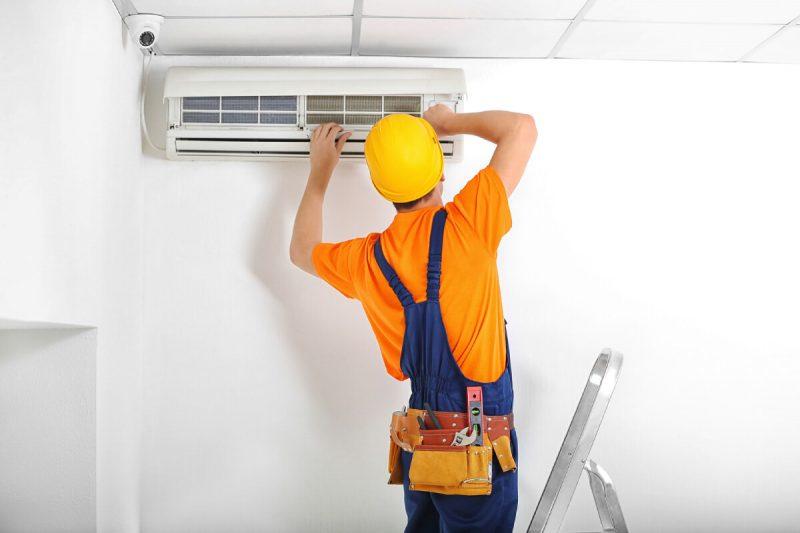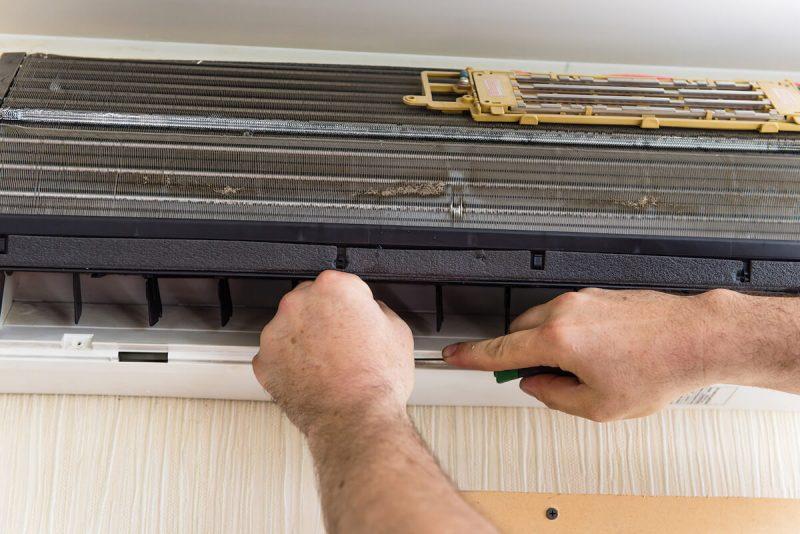
The surprising truth is this: Many people don’t know how best to use their aircon. Although most buildings in Singapore are air-conditioned, it doesn’t mean everyone knows how to operate the aircon in a way that’s efficient for the device. For example, how many of you walk into your room on a hot day and turn the aircon to 16 degrees thinking the room will cool faster this way? The fact is, turning the aircon to a low temperature doesn’t change the rate of cooling!
The problem is this: these mistakes add up and make our aircons work harder than they should. This leads to over-consumption of energy, sky-high energy bills, and a shorter lifespan for our devices. To avoid all these consequences, you should take note of these common mistakes aircon users commit:
Using an aircon with insufficient power
The cooling power of aircons is measured in units called BTU. The higher the BTU, the more cooling power the aircon has. Generally, the right number of BTUs for your space depends on the size of the room. Some people might mistakenly purchase an aircon with insufficient BTUs to cool their room, and then wonder why their aircon doesn’t work well. An underpowered aircon will also strive to work harder to cool the room, thus putting a strain on the aircon device and making it prone to malfunctions.
Using the aircon when the doors and windows are wide open
Aircons work by removing warm air from the room, and circulating cool air around the room. By this logic, it would be counterintuitive if you leave the doors and windows open while the aircon is running. When you leave the room open, the warm and cool air cannot be separated effectively because warm air is constantly streaming back into the room! Most people know this for a fact, but it can be easy to forget sometimes. Next time, do remember to shut the doors and windows when the aircon is on!
Leaving the unit operational 24/7
Aircons consume a huge amount of power, so you should only use it when it is absolutely necessary. Some people have a habit of leaving the aircon on even when they leave the house, or leave it on for long periods without giving the device a break. This not only jacks up your energy bills significantly, but also makes your aircon unit suffer. Instead, you should strive to use the aircon only when it is needed, such as on warm days, and when people are actually using the room.
Setting too low temperatures
It is common to see people crank the thermostat to the lowest possible temperature (usually, 16 degrees Celsius) thinking that it will make the aircon cool the space faster. However, this is a misconception. Whether you set the temperature to 24 or 16 degrees, the aircon has a constant cooling rate. The only difference is the temperature at which it stops cooling. So, by setting the aircon to 16 degrees, the aircon has to work longer to reach the set temperature, thus wasting energy.
Not using a fan
This is a lesser-known ‘mistake’ – but a fan and aircon can partner up to give you great cooling with great savings! Some people feel that an aircon is good enough to cool the room, but when you use it hand-in-hand with a fan, you can save immensely because the aircon does not need to work as hard. A fan also uses barely a fraction of the power that the aircon uses, so don’t worry about it contributing to your energy bills.
Not maintaining your aircon
Many people take it for granted that their aircons will work continuously for many years without them doing anything to maintain the device. However, the truth is, aircons need regular cleaning and maintenance, especially if they are subjected to heavy use. You can sign up for an aircon servicing package to help you keep track of your aircon maintenance, or opt for an aircon chemical overhaul in Singapore to clean out your old aircon. You will be glad to know that in Singapore, aircon maintenance services are pretty affordable, and it goes a long way in preserving the lifespan of your unit.
Did any of these common mistakes surprise you? Now that you know about them, do avoid committing these mistakes and use your aircon in a more efficient way!
Sign up for our newsletter
Get the best content on user insights, design, and product management delivered to your inbox every week.
Share This Article



